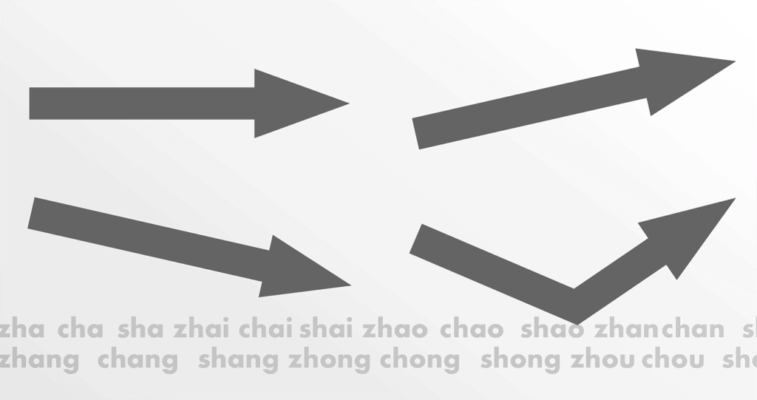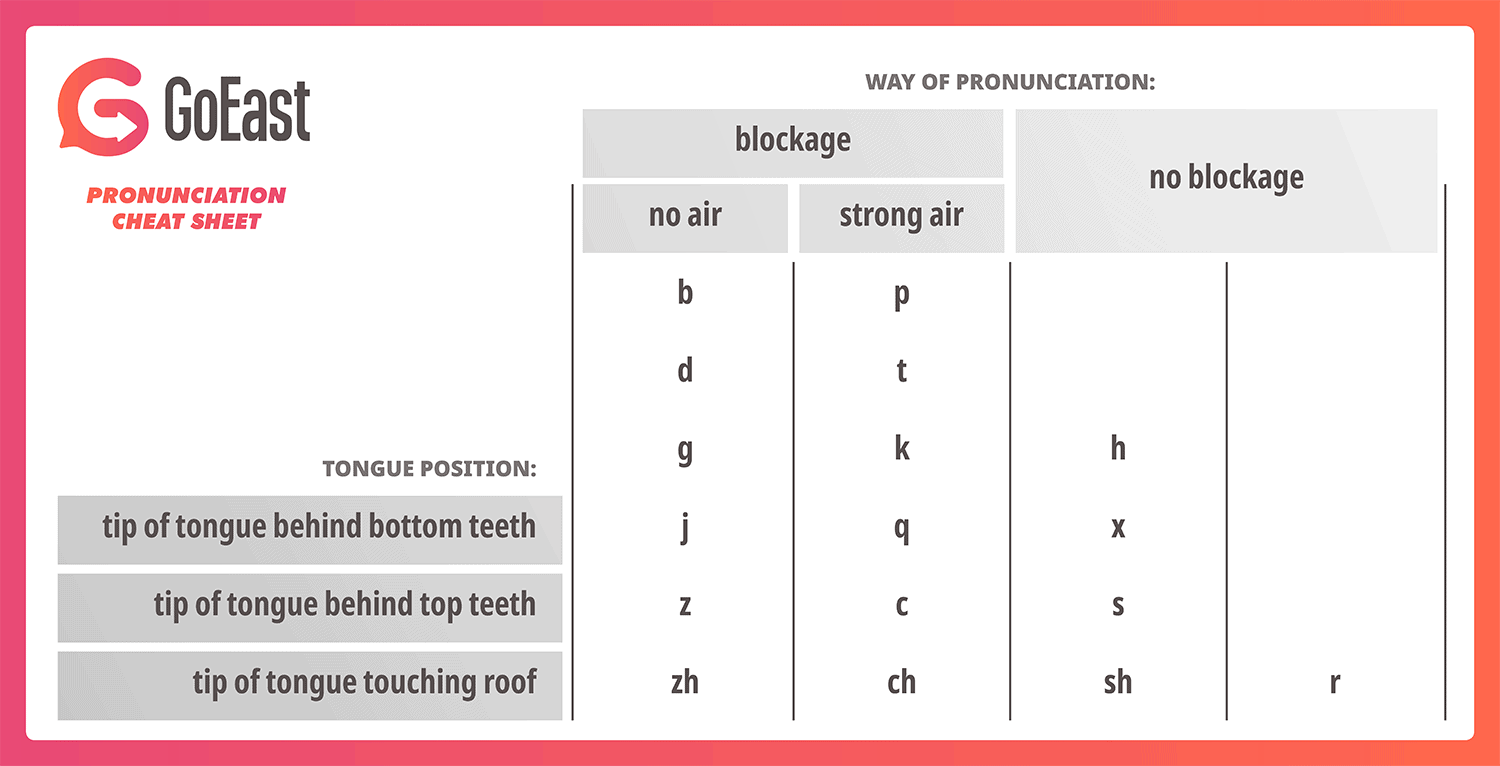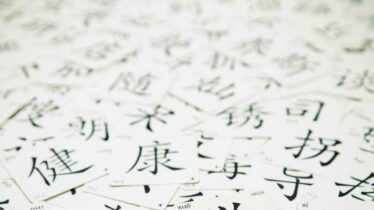Pronunciation of the Chinese language – The Beginner Guide
Correct Chinese pronunciation is one of the hardest parts of the Mandarin language. There are not just the tones, but some of these sounds you need to pronounce are absent in many Western languages, so you’ll have to train your mouth and tongue on how to speak them. If you haven’t, first read our guide on Pinyin and our guide on finals, initials.
Chinese Pronunciation – The Beginner Guide
Let Lynn take you through pronouncing the tones, finals, and the initials of the Chinese language, in 26 minutes.
Part 1: How to pronounce the Chinese tones
Chinese is a tonal language, which means different tones, like music, will change the meaning of the word. We have four tones in the Chinese language. When you apply it to the same set of alphabets, you can get different meanings. Here are the four tones of the Chinese language, plus the fifth neutral one: mā | má | mǎ | mà | ma
- māo: cat
- máo: hair
- mao: rivet
- mào: hat
These tones are important because they can totally change the meaning of a word! “Wǒ xiǎng wèn nǐ” means I’d like to ask you a question, but change wèn to wěn and it means I’d like to kiss you.
Here are some tips for speaking the Chinese tones:
Here are the tricks for you to master tones:
| First tone | The pitch is high and flat, like the pitch you will use in “en” when you are thinking something hard |
| Second tone | The pitch is rising, like the pitch you use in “en” when you are confused and asking a question |
| Third tone | The pitch goes down first and then up, like the pitch you will use in “en” when you are trying to tease someone |
| Fourth tone | The pitch is falling, like the pitch you will use in “en” you are being certain and confirm it is ok |
When beginning to speak Chinese, don’t feel too afraid to overdo the tones when speaking them. They’ll become more natural later.
Finally, you just need to practice how to combine these ones together fluently, try some of these syllables below:
shànghǎi,shāfā,wǒ ài nǐ
Part 2: Improving your Chinese pronunciation
First, you need to know Pinyin very well and you need to learn to distinguish the pronunciation of the tones. Listen to the word recording and try to say the word with the same tone. You can try our Chinese practice stories for this. You can listen to pronunciation audio. After listening to the recording, you can also read after it. Speak as much as you can. We explain how to improve your Chinese language pronunciation deeper in this article.
Pronounce the sounds of the Chinese language
There are several ways to display the pronunciation of the Chinese language in alphabet writing. We find this method really useful, which divides the sounds into:
- blockage with no air
- blockage with strong air
- no blockage
It further divides this with tongue-positions:
- tip of tongue behind bottom teeth
- tip of tongue behind top teeth
- tip of tongue touching roof
Part 3: Chinese Pronouncing the initials & finals:
First, you shall get familiar with the sounds of all the initials, finals and tones found in the Chinese alphabet, then you learn how to pronounce them together as a complete sound. Here are some tricks for you to learn the sounds of Pinyin fast:
Pronunciation of the 23 initials:
Most of these 23 you can find English equivalences, here they are:
| Chinese alphabet – initials | How to pronounce them |
|---|---|
| b | like spa |
| p | like poor |
| m | like mum |
| f | like fur |
| d | like stop |
| t | like together |
| n | like nit |
| l | like love |
| g | like skirt |
| k | like cake |
| h | like hat |
| j | No equivalent in English, but similar to an unaspirated “-chy-” sound when said quickly |
| q | No equivalent in English. Like punch yourself, with the lips spread wide as when one says ee |
| x | No equivalent in English. Like sh y, with the lips spread |
| z | similar to something between birds but voiceless |
| c | similar to ts in cats, but strongly aspirated, very similar to the Czech, Polish, and Slovakian c. |
| s | like snake |
| zh | similar to hatching but retroflex |
| ch | similar to church but retroflex |
| sh | similar to shoe but retroflex |
| r | no equivalent in English, but similar to the r in right |
| y | like water |
| w | like yes |
Pronunciation of the finals in the Chinese alphabet:
The most important are the basic 8 components first: They are very similar to the English ones. The rest of the finals are just combinations of these 8, and when you pronounce them, just remember the trick: you slide quickly from one sound to another.
| Chinese alphabet – finals | How to pronounce them |
|---|---|
| a | like father |
| o | like office |
| e | similar to duh, like the sound one makes when he/she gets punched on the stomach |
| i | like bee |
| u | like loose |
| ü | as in German über or French lune |
| -n * | They are not real finals, but used as components of finals, similar to English, which -ng has a stronger sound for your nose |
| -ng * |
Here’s Maria going over some more sounds, how to pronounce of ‘i’, ‘ü’, and ‘u’ correctly:
Here’s Maria explaining the pronunciation of j q x in Chinese.
… and how to pronounce Z C S Zh Ch Sh R in Chinese.
How to pronounce the Chinese ‘R’
Another difficulty is the Chinese R, which is different from most Western languages and causes trouble for many beginning Mandarin students. Roll up your tongue. The two sides of your tongue touch the upper jaw. Now try to pronounce r and at the same time you can put your hand on your throat. Feel the vibration of your vocal cords. Then try to pronounce these pinyin.
ri
re
ren
ran
There is also another r in words like 二Èr, 儿子érzi, 耳朵ěrduǒ. It sounds like the r in litter or flowers.
Click here for more info on how to pronounce the Pinyin in the Chinese alphabet.




